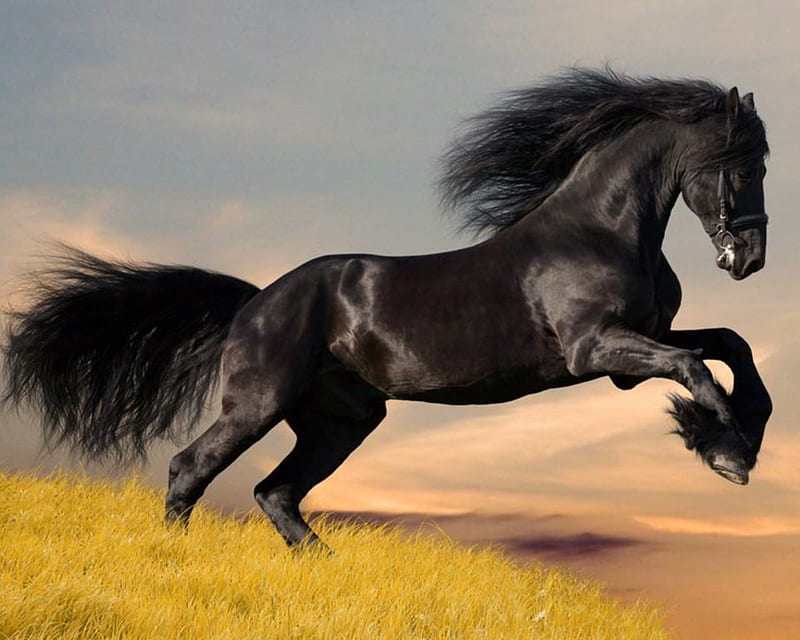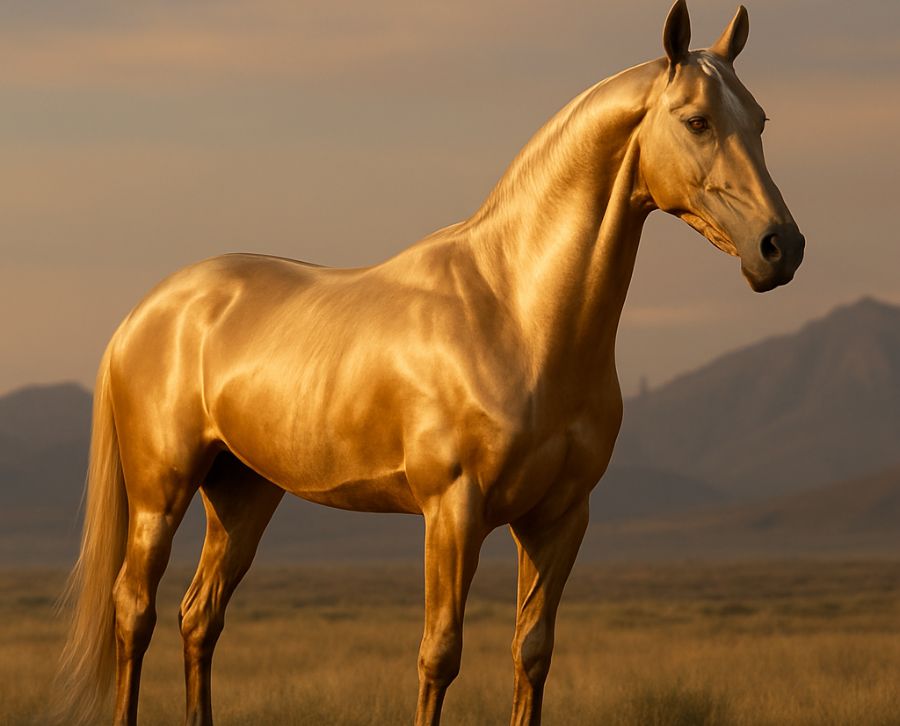The Arabian horse is a legendary breed distinguished by its endurance, speed and loyalty. It is considered one of the most beautiful horses in the world, and is prized for its elegance, grace and nobility. It has a unique combination of physical characteristics, performance abilities and temperament, making it a highly valued breed in the equine world.
Knowing their history, it’s no wonder Arabian horses are so popular in riding competitions and show events. And that’s what you’ll discover in this article.
What is the Arabian horse breed called?
The Arabian horse breed is known simply as “Arab”, “Arabian Horse”. The term in its original language is خيل عربية.
On the other hand, Kuhaylan, Abyan, Saqlawi, Hamdani and Hadban are not common names, but rather some of the most famous bloodlines of Arabian horses. Each of them has its own particular characteristics and abilities, such as the strength and endurance of Kuhaylan, the beauty and elegance of Abyan and Saqlawi, the speed and agility of Hamdani, and the versatility of Hadban.
There are also famous names of their own, Godolphin and Darley, who were Arabians imported to England in the early 18th century and are considered the most influential founders of the English thoroughbred bloodline.
Origin of the Purebred Arabian Horse
This breed of horse is considered one of the oldest in the world, with a history dating back to the Arabian desert some 4,500 years ago. It is believed to have been domesticated by the Bedouins for transport, warfare and hunting, through strict artificial selection that gave rise to today’s breed.
Although specimens existed in Europe as early as the Arab invasion of the 8th century, it was in the 18th century that they spread rapidly across the continent and the rest of the world and were used to improve other breeds.
Where is the Arabian horse?
Although originating from the Arabian Peninsula, significant Arabian horse populations have been established in many countries:
- The United States has the largest population of Arabian horses in the world. In fact, the United States-based Arabian Horse Association is the largest Arabian horse registration organisation in the world.
- There are significant Arabian horse populations in several countries in Europe, including the United Kingdom, France, Poland and Germany.
- The Arabian Peninsula, the birthplace of the breed, still has a significant population of the breed. Countries such as Saudi Arabia, United Arab Emirates and Oman are known for their love and appreciation of the breed.
- In Australia and New Zealand there are several registration and competition organisations dedicated to the breed.
What do Arabian horses look like?
This elegant breed is slender, strong and hardy. They have dense bones that allow them to withstand long distances. Their fur is usually solid in shades of black, bay, grey, chestnut or sorrel. They are also characterised by a distinctive head with a concave profile, broad forehead, large nostrils and prominent eyes. Their bodies are compact and strong, with a short back, a broad and deep rib cage, and a tail carried high. Their manes and tails are abundant.
Their performance in various equestrian disciplines is remarkable, demonstrating great endurance and speed. Although not the fastest, they can maintain impressive speeds for long periods, making them ideal for endurance competitions.
Their versatility also extends to other disciplines such as jumping, dressage and rodeo. All in all, this type of horse is one of the most prominent in the equestrian world.
What is the Arabian breed like?
The Arabian breed is considered “warm-blooded”, with characteristics such as energy, fieriness and athletic disposition.
Other breeds that are also considered “warm” are the English purebred and the Berber horse, which are related to the Arabian horse in different ways. The English purebred is a direct descendant, having been developed in the 17th century by selective crossbreeding of Arabian and other European breeds. The Berber horse is not a direct descendant, but is believed to share a common ancestor in the North African and Middle Eastern region.
Behaviour and character of a purebred Arabian
The Arabian horse is distinguished by its intelligence and closeness to humans. It has great sensitivity and establishes a strong bond with its rider or handler, although it does not like to be treated roughly.
In addition, their ability to learn quickly makes them very adaptable. Arabian horses are also known for their great loyalty and some owners describe them as courageous, sensitive and energetic.
How tall are Spanish Arab horses?
Arabian horses are usually between 1.45 and 1.65 m at the withers, which is the measurement from the ground to the top of the horse’s back, just behind the neck.
What do Arabian horses eat?
This breed feeds mainly on hay, oats, barley and fresh grass, although they may sometimes eat other things such as vegetables or fruit. It is important to provide them with a balanced diet to maintain their energy.
How long does an Arabian horse live?
The life expectancy of these horses is between 25 and 30 years, which may be slightly longer than many other breeds. With proper care they could live more than 30 years.
How many types of Arabian horses are there?
There are several ways to classify the types of Arabian horses, and different lists of families, lines and sub-lines can be found.
Some of the most common classifications refer to three typologies selected by the Bedouin tribes (Kuhailan, Siglavy and Hamdani), the five basic families of the breed (Kehilan, Seglawi, Abeyan, Hamdani and Hadban), and over 240 lines, sub-lines and families that have developed from the single trunk of the Kuhaylan type Arabian. They can also be differentiated according to country, there being Egyptian, Russian, Polish, and Spanish.
What is the price of a thoroughbred Arabian horse?
The price of purebred Arabian horses can vary significantly, depending on factors such as lineage, quality and training. Horses can be found for prices ranging from 3,000 to 5,000 euros. However, there are also much more expensive horses that can exceed 100,000 euros, especially if they have an exceptional lineage or have demonstrated outstanding racing, showing or jumping ability.





